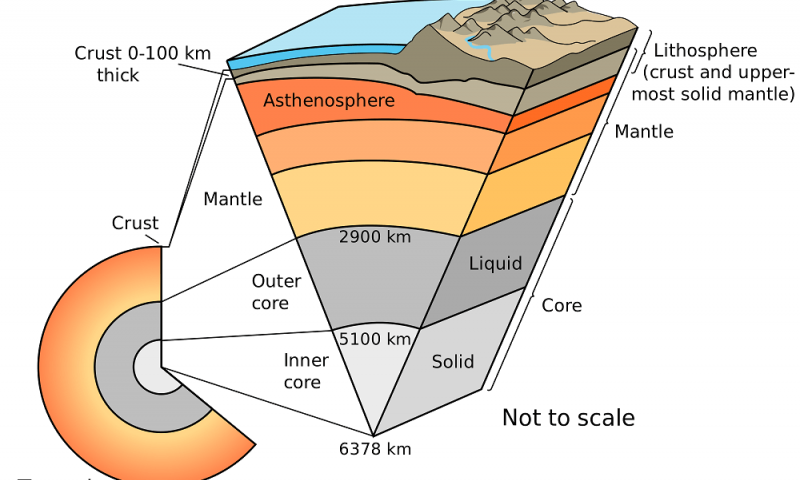Governance
25th Western Zonal Council Meeting
Why in News
The 25th meeting of the western zonal council will be held in January 2020, under the chairmanship of Union Home Minister.
- Maharashtra will be the lead coordinator this time with the Chief Minister of the state co-chairing the meeting.
- It will present a roadmap for the safety of women online and ways to curb cyberbullying.
- The 24th meeting of the council was held in Goa in August 2019.
-
Western Zonal Council comprises of Goa, Gujarat, Maharashtra, the Union Territories of Daman and Diu, and Dadra and Nagar Haveli.
Key Points
- The Maharashtra government has been directed to hold awareness campaigns in districts on cyberbullying of women, cyber frauds and internet child pornography, etc.
- It seeks participation from the entire state in the drive which will be named ‘Cyber Safe Women’, to make the internet safe for women and children and to prevent online crimes against them.
Zonal Councils
- The Zonal Councils are the statutory (and not the constitutional) bodies. They are established by an Act of the Parliament, that is, States Reorganisation Act of 1956.
- The act divided the country into five zones- Northern, Central, Eastern, Western and Southern and provided a zonal council for each zone.
- While forming these zones, several factors have been taken into account which include: the natural divisions of the country, the river systems and means of communication, the cultural and linguistic affinity and the requirements of economic development, security and law and order.
- Each zonal council consists of the following members:
- Home Minister of Central government.
- Chief Ministers of all the States in the zone.
- Two other ministers from each state in the zone.
- Administrator of each union territory in the zone
- In addition to the above mentioned Zonal Councils, a North-Eastern Council was created by a separate Act of Parliament, the North-Eastern Council Act of 1971.
- Its members include Assam, Manipur, Mizoram, Arunachal Pradesh, Nagaland, Meghalaya, Tripura and Sikkim.
- These are advisory bodies that make recommendations with regard to any matter of common interest in the field of economic and social planning between the Centre and States border disputes, linguistic minorities, inter-State transport or matters connected with the reorganisation of States.
Geography
Iron Snow on Earth’s Inner Core
According to a study published in journal JGR Solid Earth, the earth’s inner core is capped by snow made of tiny particles of iron which are much heavier than any snowflake on Earth's surface.
- The iron-snow falls from the molten outer core and piles up in the inner core of the Earth creating stacks that are up to 320 km thick.
- This finding was unearthed after analyzing signals from seismic waves as they pass through the Earth. Seismic Waves are vibrations generated by an earthquake, explosion, or similar energetic source and that propagate within the Earth or along its surface.
- The seismic waves moved much slower than expected when they passed through the base of the outer core.
- However, they moved faster than estimates as they passed through the eastern hemisphere of the top inner core.
- The scientists found out that slurry-like (semi -liquid) composition of the snow pack slows the seismic waves. The variation in snow pile size -- thinner in the eastern hemisphere and thicker in the western -- affected the speed of the waves.
- Earlier studies had also pointed about the existence of slurry layer exists between the inner and outer core.
- The same is supported by the latest data from experiments on core-like materials. The scientists have found that crystallisation is possible and that about 15% of the lowermost outer core could be made of iron-based crystals (snow).
- These crystals could eventually fall down the liquid outer core and settle on top of the solid inner core.
Earth’s Internal Structure
The earth is made up of three different layers: the crust, the mantle and the core.
- The Crust
- This is the outside layer of the earth and is made of solid rock, mostly basalt and granite.
- There are two types of crust; oceanic and continental. Oceanic crust is denser and thinner and mainly composed of basalt. It is also known as Sima (most abundant minerals being silicate and magnesium)
- Continental crust is less dense, thicker, and mainly composed of granite. It is also called as Sial (most abundant minerals being silicate and aluminium).
- The Mantle
- The portion of the interior beyond the crust is called the mantle. The mantle extends from Moho’s discontinuity (boundary between the crust and mantle) to a depth of 2,900 km.
- The crust and the uppermost part of the mantle are called lithosphere. Its thickness ranges from 10-200 km.
- The upper portion of the mantle is called asthenosphere which is the main source of magma that finds its way to the surface during volcanic eruptions.
- The lower mantle extends beyond the asthenosphere. It is in solid state.
- The Core
- The mantle- core boundary (gutenberg discontinuity) is located at a depth of 2,900 km.
- The outer core is in a liquid state while the inner core is in solid state.
- The core is made up of very heavy material mostly constituted by nickel and iron. Thus, it is sometimes referred to as the nife layer.
Indian Society
Tribes in Assam
Why in News
The anti-Citizenship (Amendment) Act protests have brought demands of the Adivasis and tea tribes in Assam to the forefront.
- The Adivasis, comprising 106 sub-groups, are the largest of the six communities demanding the Scheduled Tribes (ST) status. The others are Chutiya, Koch-Rajbongshi, Moran, Matak, and Tai-Ahom.
- The Adivasis comprise 18% of Assam’s population.
- The grant of ST status to these communities will make Assam a tribal-majority State.
Tea Tribes
- The tea garden workers were originally brought by the British from Odisha, Madhya Pradesh, Bihar, Andhra Pradesh and West Bengal to work in the tea plantations of Assam during mid 19th century. Later they permanently settled in Assam.
- They are known as tea and ex-tea garden tribes, who are recognized as Other Backward Classes (OBC) by the Government.
- These people not only constitute a sizable chunk of the population in the State but also play a major role in tea production of the State (about 53% of the total tea production of the country).
- Economically, they are quite backward and literacy level among these communities is extremely low. Thus, they are demanding ST status in the state of Assam.
Koch Rajbongshi
- Koch Rajbongshi is an ancient tribe originally from the ancient Koch kingdom. The word "Rajbongshi" literally means "royal community".
- The homelands of this ancient tribe include West Bengal, Assam, Arunachal Pradesh, Meghalaya and various North-Eastern parts of India.
- They speak Rajbongshi/Rajbanshi language. This language is also spoken in Bangladesh and Nepal.
- The Rajbongshi was primarily animist (perceiving all things animated and alive.), but later on, they followed Hinduism/Sanatana (both Shaiva and Vaishnavite), A few sections of Rajbongshi people were also found to be followers of Christianity.
Moran Community
- The Moran community is one of the aboriginal tribes of Assam.
- In the 13th century, they lived in the south eastern region of the Brahmaputra valley.
- They had their own independent kingdom before the advent of the Ahoms.
- It is possible that it is a tribal word that means a group of people like, Mising, Mulung, Mung tai, etc.
- In the early 17th century, Aniruddhadeva converted them to Vaishnavism and thus brought about the regeneration of their society and culture.
Important Facts For Prelims
Savitribai Phule Jayanti
Why in News
Savitribai Phule Jayanti is celebrated on 3rd January every year to honour her contribution towards society, women empowerment and education.
- She is considered to be one of India’s first modern feminists and remembered for being India’s first female teacher who worked for the upliftment of women and untouchables in the field of education and literacy.
Savitribai Phule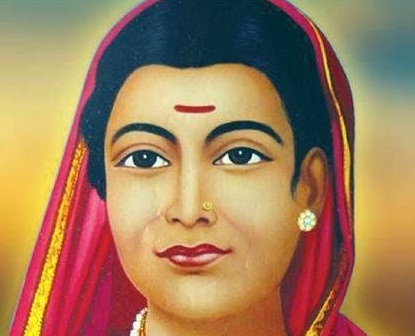
- She was born in Naigaon, Satara district of Maharashtra on January 3, 1831 and married activist and social reformer Jyotirao Phule at the age of nine years.
- With her husband’s support, Phule learned to read and write and both of them found India’s first school for girls called Bhide Wada in Pune in 1848.
- The idea of educating women and the untouchables was considered to be a radical one at that time.
- In Maharashtra, a nationalist discourse was playing out between 1881-1920 led by Bal Gangadhar Tilak, who opposed the setting up of schools for girls and non-Brahmins citing loss of nationality.
- Phule started the Literacy Mission in India between 1854-55 and the Satyashodhak Samaj (Society for Truth-Seeking), through which she along with her husband wanted to initiate the practice of Satyashodhak marriage, in which no dowry was taken.
- She wrote poems in Marathi in which she advocated for values such as humanism, liberty, equality, brotherhood, rationalism and the importance of education among others.
- Her books of poems are “Kavya Phule” and “Bavan Kashi Subodh Ratnakar”.
- She passed away on March 10, 1897.
Important Facts For Prelims
Nritya Kalanidhi Award
Why in News
Recently, Bharatnatyam dancer Priyadarshini Govind has been conferred with Nritya Kalanidhi Award.
- The award has been presented by the Madras Music Academy for her performance and efforts to propagate the art form.
Bharatnatyam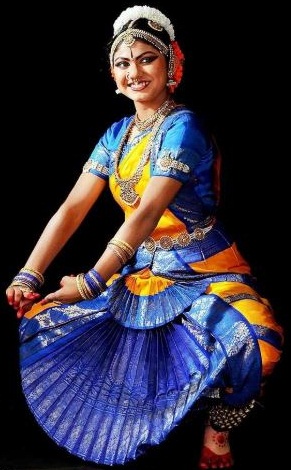
- It is one among the eight classical dances of India.
- It was conventionally performed by Devadasis (girls offered to God in the temple) in Hindu Temples of South India. Thus, it is also known as ‘Dasiattam’.
- It was developed in Tanjore and other regions of South India prominently Tamil Nadu, and could possibly be the oldest classical dance form of India (around 2000 years old).
- The Abhinaya Darpana by Nandikesvara is one of the main sources of textual material for the study of the technique and grammar f body movement in Bharatnatyam Dance.
- Bharatnatyam dance is known to be ekaharya, where one dancer takes on many roles in a single performance.
- The dance involves transitional movements of the leg, hip and arm. Expressive eye movements and hand gestures are used to convey emotions. It encompasses of Bhav, Rag, Ras and Taal.
- The accompanying orchestra consists of a vocalist, a mridangam player, violinist or veena player, a flautist and a cymbal player. The person who conducts the dance recitation is the Nattuvanar.
- In its usual form, the dance is generally broken into seven main parts – Alarippu, Jatiswaran, Shabda, Varna, Pada, Thillana and Sloka.
- Bharatnatyam poses are depicted on the gopurams of the Chidambaram temple (Tamil Nadu).
- E. Krishna Iyer and Rukmini Devi Arundale had played a significant role in helping the dance regain its lost popularity and position.
Important Facts For Prelims
Patola Sarees from Gujarat
Why in News
Khadi and Village Industries Commission (KVIC) has inaugurated a first Silk Processing Plant at Surendranagar in Gujarat.
- The plant would help to reduce the cost of production of silk yarn and increase the sale and availability of raw material for Gujarati Patola Sarees locally.
- Currently, the raw material silk yarn is purchased from Karnataka or West Bengal, where silk processing units are situated
Patola Sarees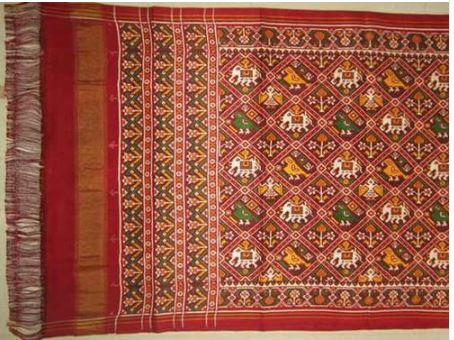
- Patola is a double ikat woven sari, usually made from silk, made in Patan, Gujarat, India.
- Patola-weaving is a closely guarded family tradition.
- It takes six months to one year to make one sari due to the long process of dying each strand separately before weaving them together.
- Patola are usually woven in Surat, Ahmedabad and Patan. But velvet patola styles are majorly made in Surat.
- It has received a Geographical Indication (GI) tag in 2013.
- Patola sarees are highly valued in Indonesia and became part of the local weaving tradition there.
Khadi and Village Industries Commission (KVIC)
- KVIC is a statutory body established under the Khadi and Village Industries Commission Act, 1956.
- The KVIC is charged with the planning, promotion, organisation and implementation of programmes for the development of Khadi and other village industries in the rural areas in coordination with other agencies engaged in rural development wherever necessary.
- It functions under the Ministry of Micro, Small and Medium Enterprises.
Important Facts For Prelims
Extraocular Vision
Why in News
For the first time, researchers have shown that a species of brittle stars can see even though it does not have eyes.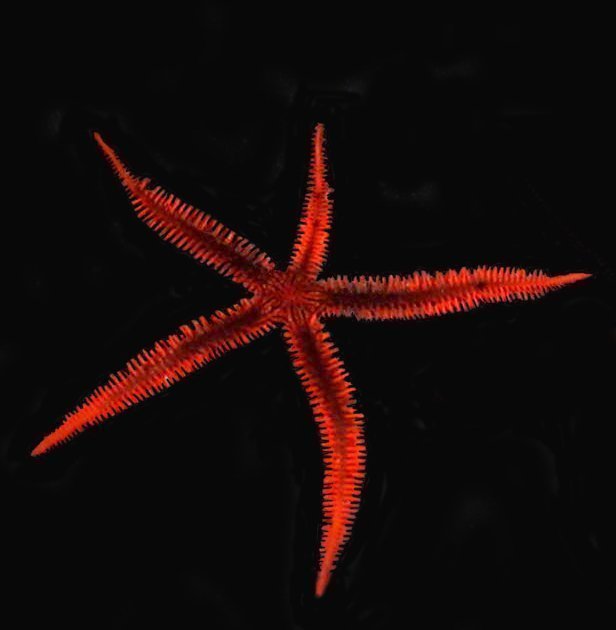
- The ability to see without eyes is known as extraocular vision.
- The red brittle star (Ophiocoma wendtii) has become only the second creature, after a sea urchin species, known to have the extraocular vision (barring rare cases in other species).
- In sea urchins and brittle stars, researchers suspect that extraocular vision is facilitated by the photoreceptor cells found on their bodies.
- The researchers suggest that a brittle star sees with the help of light-sensing cells that cover its entire body. These light-sensing cells give the brittle star visual stimuli, allowing it to recognise coarse structures such as rocks.
- Another peculiar feature of the red brittle star is its signature colour change. While the creature is deep red during the day, it changes its colour to beige at night.
- The researchers think that there may be a link between their extraocular vision and colour changing abilities since the responses they saw in the creatures tested during the day, disappeared in those that were tested at night.

